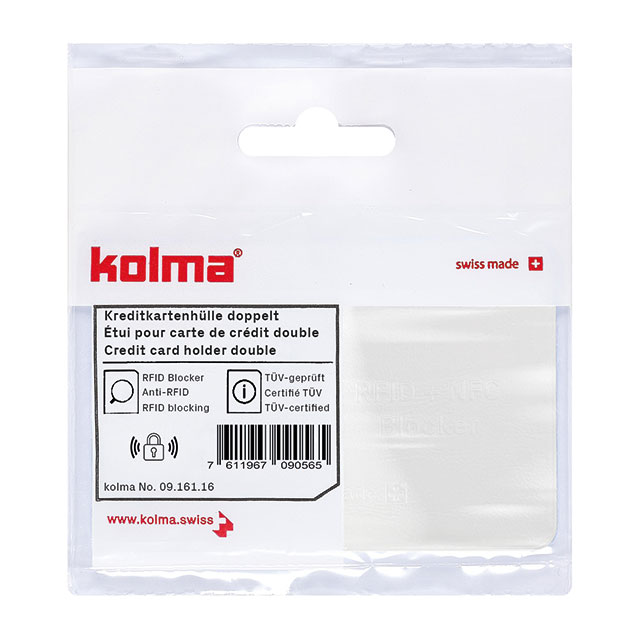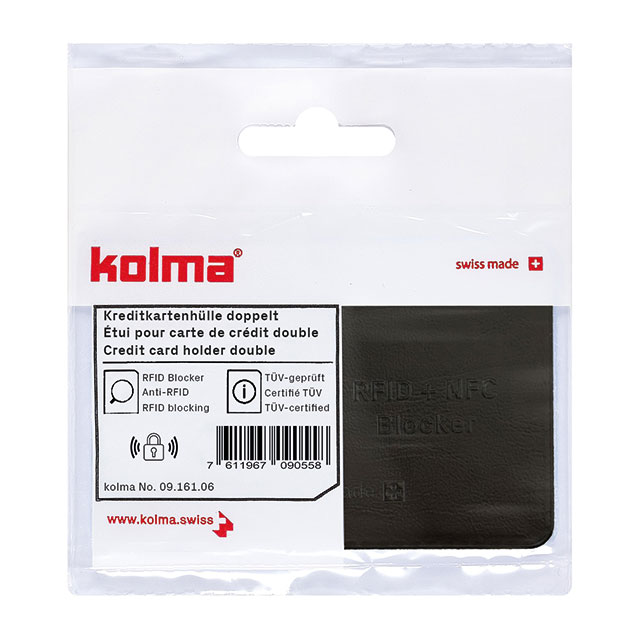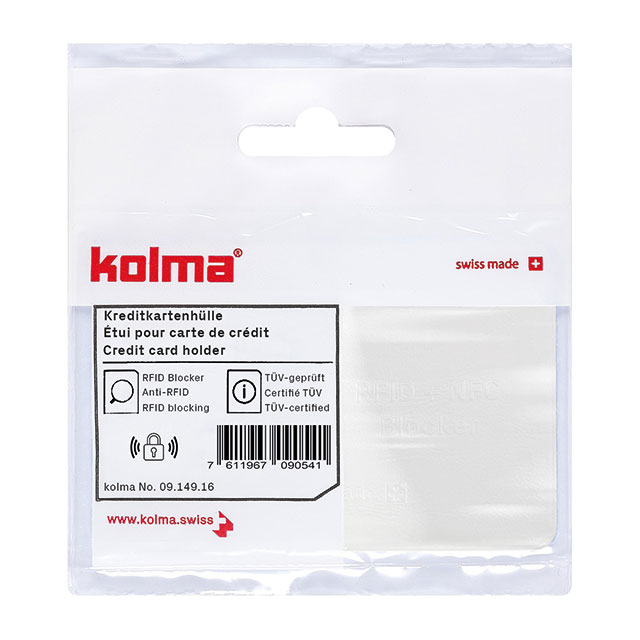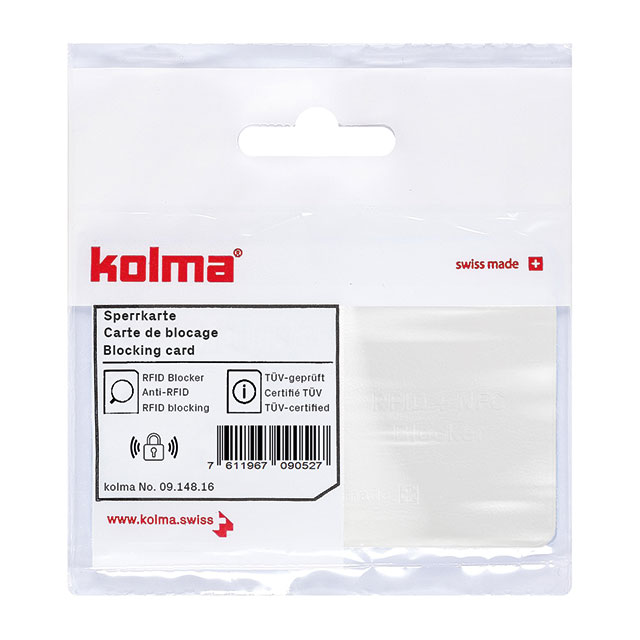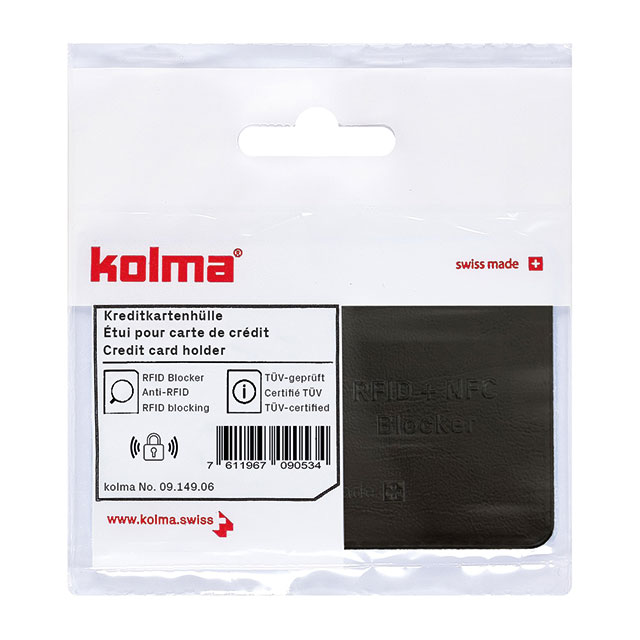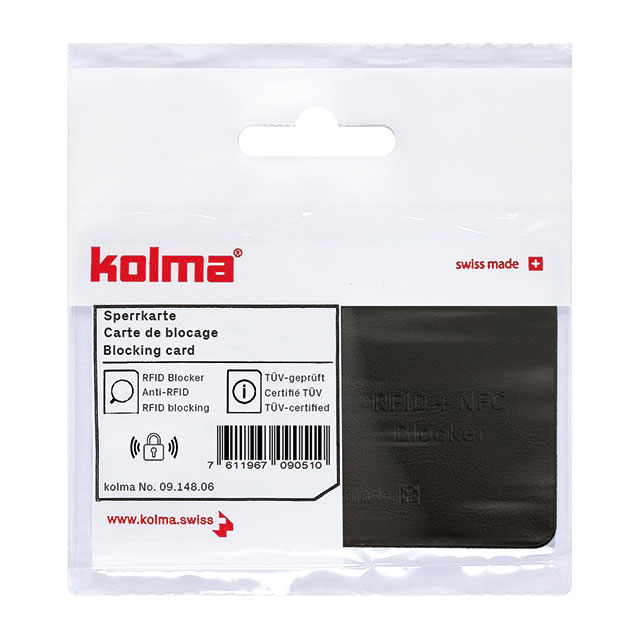How does RFID work?
RFID stands for radio-frequency identification, a technology that enables the contactless transmission of data via radio waves. The system consists of two main components: an RFID chip, which is integrated into a card or an object and contains the stored data, and a reader, which reads the data on the chip via radio waves. As soon as the chip is in the vicinity of the reader, it is activated by the reader’s radio field and sends the stored data, without any direct contact.
An everyday example of this is contactless payment at the checkout in a supermarket. The credit card, which contains an RFID chip, is simply held against the payment terminal (the reader). This sends out a signal that activates the RFID chip in the credit card. The chip transmits the payment data to the terminal, which processes the payment in a matter of seconds.
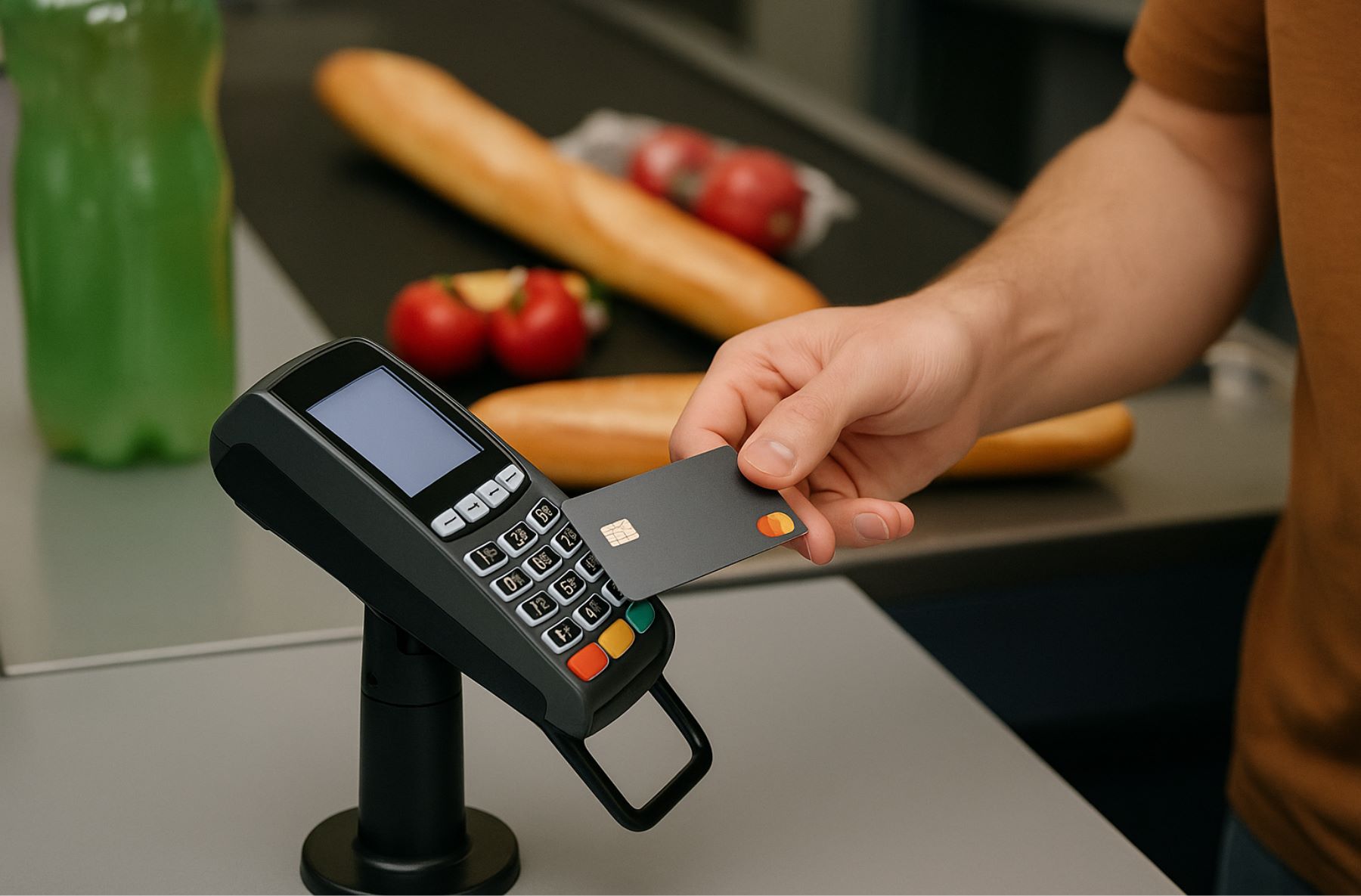
The problem of data theft
However, this technology can also be misused through people stealing private RFID data by means of skimming. Criminals use mobile RFID scanners for this that emit radio waves and activate RFID chips in credit cards, just like an official payment terminal. As soon as a credit card is within range (usually within a few centimetres to metres), it is read without anyone noticing. The data can then be misused for online purchases or to create a copy of the credit card.

Our RFID blockers obstruct the radio waves and prevent the cards from being read without you noticing. NFC (Near Field Communication) is also based on RFID technology and is also used for contactless payment, for example with a smartphone or smartwatch. The difference: NFC only works over very short distances (a few centimetres), but enables direct communication between two devices. Our products reliably block both RFID and NFC signals and thus protect all your sensitive data, regardless of the system used.
All our RFID products are TÜV-certified and have also been tested by the University of the Bundeswehr Munich, so you are guaranteed a greater degree of protection.

